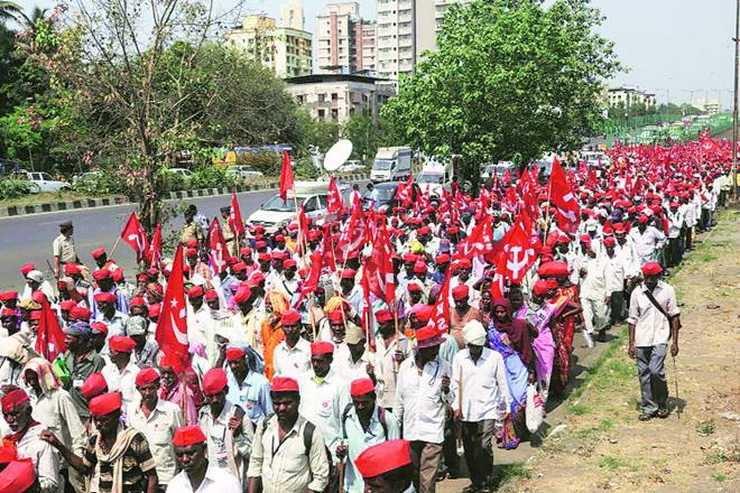The problem of being Big: Big Tech will run out of ways to keep up its scintillating growth and profits
With developments such as generative AI, Big Tech may be at a point of inflection. [siteorigin_widget class=”SiteOrigin_Widget_Image_Widget”][/siteorigin_widget] Tech has never been bigger. Alphabet, Amazon, Apple, Meta and Microsoft, put together, are almost a third of the S&P 500 market capitalisation. Last year, their total capital spending was $360 billion. That alone is more than the GDP of Pakistan. With developments such as generative AI, Big Tech may be at a point of inflection. For the incumbents, their bigness may become their biggest challenge in staying ahead. To be sure, ‘big’ in the case of tech is truly awesome. Be it revenue, profitability, consumer contact, community, ubiquitousness, Google’s holding company—Alphabet—would qualify as the all-time, most successful combination of brand, business and technology in the history of the world. But what if big were to prove an eventual challenge? Google search, the Android mobile operating system, the Chrome browser, Google Play Store for apps, Workspace productivity tools and YouTube each has more than 2 billion users per month. Add Google Maps, Translate, Google mail and more. The Economist reported that “humans collectively spend 22 billion hours a day on Alphabet’s platforms.” What does Google sell and who are the buyers? It sells attention and engagement to advertisers. Revenues have grown at an average annual rate of 28% since its IPO in 2004 and almost 80% of inflows are for online ads. Never sliding back in any quarter, Alphabet has generated $460 billion of cash. Its share price has risen 50-fold, making it the world’s fourth-most-valuable company. Isn’t this enough, one would ask. Not quite. Alphabet’s ‘bread and butter’ digital-ads business is maturing. Data is the new oil, attention the oil wells, and the internet its refinery. With a base of $300 billion in annual revenues, new oil wells are not throwing up the gushers and growth is a challenge. Enough has been said about the end of third-party cookies and resulting impact, but given what’s at stake, there isn’t clarity—forget consensus—on available new means to reach, target and engage. It will impact measurements of effectiveness and its consequential monetisation. It seems bizarre, given the context of Alphabet’s awe-inspiring success, that now its investors want cost efficiency and capital discipline. Insider Intelligence expects the annual increase in global digital ads sales to stay within 10% or less in the next few years, down from a rate of 20% or so in the past decade. Hence, the anxiety is legitimate. For a total pie of about $700 billion, further share gain on part of Google will invite scrutiny from regulators. Sundar Pichai may be no Rockefeller, but there are enough concerns in the US concerning its search monopoly such as its arrangement with Apple and others, whereby it pays a reported $10 billion a year to be the default search engine. This may be one area which ironically brings the liberals and the conservatives together as each suspects such scrutiny is manipulated by ‘the other’. Action has ensued. Although search remains immensely lucrative, with operating margins of nearly 50%, its pathways are mutating. Now direct video search on YouTube, TikTok, Instagram counts high up among the options. The flip side is that video doesn’t monetise in equally profitable ways. As chatbots and other “generative” AIs have seen burgeoning presence, based on the appeal of a likeness to human-generated content, Pichai’s insistence that Alphabet is an “AI-native” company may ring true. That said, will its scale matter? Alphabet shares trade at a lower price relative to earnings than Apple or Microsoft, and not much higher than the S&P 500 index of big American firms. This is a tell-tale data point. Apple transformed itself from a desktop brand to a mobile-phone powerhouse. Microsoft matured from a desktop OS player to a cloud-computing ace. Investors and analysts may have demolished Mark Zuckerberg’s bet on the metaverse, but let us remember that Apple and Microsoft spent years in the cold too. Specifically on the metaverse, Gartner is still hopeful. According to its analysis, the metaverse is still in its early stages of development, but it is rapidly gaining traction. Gartner predicts that by end 2023, it will reach a tipping point where it will become a mainstream platform for social interaction, commerce, and entertainment. The year 2022 may have been Big Tech’s annus horribilis, but the firms are back in the circus. Artificial intelligence (AI) going mainstream will boost the fortunes of Big Tech and challenge them at the same time. These giants—Alphabet, Amazon, Apple, Meta and Microsoft—have been growing revenues and profits in double-digits for 10 years and counting. That is unprecedented in the history of business of that size. But that may also be the undoing. Big Tech will run out of ways to keep up its scintillating growth and profits. This is the reason that at the first signs of slowdown, the markets punished these giants severely. Except Apple, each one has had multiple rounds of layoffs. The count is as high as 70,000 workers altogether. Ambition will lead to tech cannibalism. All the big players operate in overlapping areas such as cloud computing, advertising, gadgets, new services. Of course, like the traditional big corporations with sputtering growths, new-age tech giants may also look to purchase growth. Microsoft cut a $69-billion deal to buy growth via the acquisition of Activision, which has revenues of $8 billion per annum. Margins will be strained. Growth will stall. Upstarts will bring new technologies to market. Then, Big Tech will start to shrink till incumbents give way to new players or effectively reinvent themselves. This all may seem fantastical and highly unlikely now, but will come within half a decade. The future arrives in stealthy ways, especially to topple the ‘Big’. Shubhranshu Singh, Vice president, marketing (domestic & international business), Tata Motors. Views are personal. Link: https://www.financialexpress.com//opinion/the-problem-of-being-big-big-tech-will-run-out-of-ways-to-keep-up-its-scintillating-growth-and-profits/3248792/lite/





